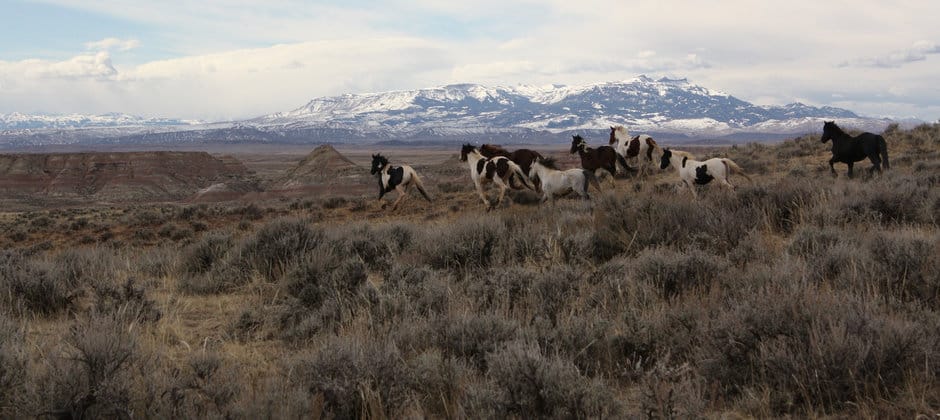Share this article
Court upholds BLM’s management of wild horses
A federal appeals court recently upheld the Bureau of Land Management’s decisions to help control populations of wild horses and burros, in two separate cases decided earlier this month.
The Wildlife Society has regularly advocated for federal agencies to reduce free-roaming horse and burro populations on public lands. As an invasive species, horses and burros compete with native wildlife and damage their habitats.
The BLM’s management of more than 95,000 wild horses and burros that roam BLM-managed public lands in 10 Western states is frequently contested in court. The ecologically feral species are managed and defined as “wild” under the Wild Free-Roaming Horses and Burros Act that was passed in 1971. The BLM established a nationwide population goal of no more than 26,690 animals, and uses gathers and fertility control to reduce the number of horses and burros on public lands.
Plaintiffs in one case, American Wild Horse Campaign v. Zinke, challenged the BLM’s removal of more than 1,700 wild horses from the Caliente Herd Area in southeast Nevada, pursuant to a plan first developed in 2008. The district court found — and the appellate court agreed — that the time to challenge the 2008 decision had passed and that, regardless, the BLM complied with both the National Environmental Policy Act and the Wild Horses and Burros Act in making its decision. The BLM took the required “hard look” at the possible consequences of its action and assessed various alternatives, as required by NEPA.
In another case, Friends of Animals v. Silvey, the court determined that a challenge to the gather plan for the Antelope and Triple B complexes in Nevada was not justified. It found that the agency adequately considered the effects of releasing geldings back to the range as part of a herd management plan on the environment and the genetic diversity of the herds. The court also upheld the BLM’s decision to conduct a continuous removal of horses through a phased-gather approach, under a single gather plan and a single environmental assessment.
The BLM recently submitted a long-awaited report to Congress, explaining its proposal to reduce the wild horse and burro population to a sustainable level over the next 15 to 18 years using various nonlethal methods.
However, to implement the plan, the BLM will need additional funding — $900 million in the plan’s first five years and more in the future — as well as stable leadership. Currently, several positions within the program are vacant, eliciting the concern of federal appropriators in the report that accompanied the Fiscal Year 2021 Interior appropriations bill. That bill would provide the wild horse and burro program with $102 million in funding next year, less than the $116 million recommended by the administration in its budget request.
The BLM is also in the process of updating the regulations that govern the agency’s management of wild horses and burros. While a timeline for that regulation has not been published, the administration did indicate earlier this spring that it would publish a notice of rulemaking in June, which did not take place.
Read TWS’s Issue Statement on Feral Horses and Burros in North America.
Header Image:
A federal court recently upheld BLM’s wild horse management in two separate cases.
Credit: Sarah Beckwith/BLM








